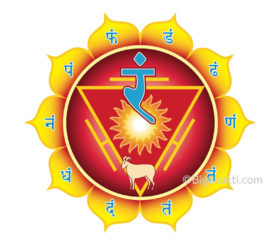This website uses cookies so that we can provide you with the best user experience possible. Cookie information is stored in your browser and performs functions such as recognising you when you return to our website and helping our team to understand which sections of the website you find most interesting and useful.
How To Create An Inspiring Self-Guided Meditation Program

Do you meditate? Have you created a program for your meditation or do you go with how you feel on the day? While all meditation is beneficial, a structured meditation program is more beneficial because it gives you a sense of direction and progress.
By following these 6 steps, you can create an effective and inspiring self-guided meditation program: one that delivers immediate benefits and also leads the way to further advancement.
The approach here also helps you to overcome the confusion that often comes with random meditation practice and the disillusionment that inevitably follows.
These are the foundation of the 6 steps:
Step 1. Why do you want to meditate?
While this step is not essential for everyone, it is for people who want meditation to become a path. For these people, writing their meditation aspirations will make all the difference.
An aspiration is a desire or hope for something greater than you currently possess. An aspiration opens your mind and heart to a bigger vision of possibility.
Here are just a few examples of aspirations from our students and clients:
I want to get back to the person I once was.
I want to be more confident and expressive.
I want to develop personal insight and intuition.
I want to become a better teacher.
I want total transformation of body, mind, and spirit.
Now to you. What are your aspirations for meditation? What do you want to achieve? How do you imagine meditation will change you?
Write your thoughts.
Each time you sit down to meditate, tune into your aspiration.
Remember and intend to realize it.
Step 2. What are your present needs?
Now that you have connected with your aspiration, it’s time to look at your current needs.
Your needs may differ from your aspirations. Identifying the difference helps you to find your sweet spot; a realistic place to begin and an inspiring path to travel.
Starting with a meditation practice that addresses your needs and your level of experience is wise, especially if you have limited time for meditation and have to fit it into a busy lifestyle.
Just as there is a structured learning path to achieving your fitness or career aspirations, there is a structured path to realizing your meditation aspirations.
For example, many people aspire to the no-mind state of Zen Buddhism. They want to empty their minds of thoughts at will. This ability belongs to the mature meditator, one who has stabilized their nervous system and removed agitation. There is a process to get there, but it takes time and skill to have a truly quiet mind at will.
Likewise, if you are not sleeping well and feel exhausted, achieving higher states of consciousness using subtle body practices such as chakra meditations is not the best starting point. These practices may cause imbalance and disorientation.
Here are some examples of the needs our students and clients began their journey with:
I need to recover after illness.
I need better quality sleep.
I need a way of calming my energy.
I need to build more vital energy.
I need a way of stopping the worry.
Now it’s your turn. What are your authentic, present needs?
Tune into how your body feels. Tune into your emotional and mental tendencies that disturb your equilibrium. Tune into your spiritual needs.
Write freely about your feelings. Go to the center of your most urgent needs.
Now, look at your aspiration and your current needs. How closely do they align?
If they do, that’s great. If they don’t, you start with your need first.
The important thing is to be practical by focusing on short-term goals based on your needs while maintaining your long-term aspirations.
Step 3. Choose one meditation or a sequence of meditations.
Once you know your needs. Choose a technique that addresses that need.
There are many forms of meditation to choose from. Some schools are based on a single meditation technique. Big Shakti is not one of those schools. We provide a range of techniques and training from Yoga-Tantra to meet diverse needs and aspirations.
We divide the meditation techniques into four groups:
- Relaxation and de-stressing:
- Healing and energy building.
- Calming the mind.
- Spiritual growth.
You have identified your needs. Which of the above groups does your need belong to?
Some groups overlap. For example, Yoga Nidra is for relaxation and de-stressing, and also for healing. Meditations for healing and building energy in the body are prana meditations which use the breath to balance energy, increase vitality and improve circulation. Mindfulness-based meditations are used to calm and strengthen the mind.
Intermediate to advanced meditators can focus on spiritual growth through chakra meditations.
Over time and will regular practice, you will learn to combine several techniques to improve health and peace of mind and to gain spiritual growth all at the same time.
Step 4. When and where will you meditate?
Decide on the time, place, and duration of your meditation.
Often, people believe that meditating for a long period is the only way to achieve anything of value. However, 15-minutes of meditation daily over a long period will give you better results than a long meditation practice performed infrequently.
Be kind to yourself. Refrain from imposing rigid, unachievable structures. Make your program flexible. For example, perhaps you could have one schedule for weekdays and another for weekends.
If you only have a few minutes a day, use that time to touch the physical body, the mind, and the heart with your awareness. This act of connecting your body-mind with your awareness is a powerful form of meditation that can truly nourish and ground your energy.
Step 5. Let go of ineffective meditation routines.
Have you been practicing a style of meditation that was once very beneficial, but no longer feels effective? Recognizing that your needs may have changed, and being able to let go of what’s not working, is integral to your psycho-spiritual growth.
Sometimes the technique isn’t the issue, and you might have to push through your lethargy. And sometimes the technique is no longer appropriate; you may need to move on.
For example, breath awareness calms the mind, but it won’t heal the body as quickly and effectively as other forms of meditation, such as prana techniques. There are also specific meditation techniques that enable you to remain grounded and stable during times of conflict and stress.
If you cannot identify the issue, it’s always good to touch base with an experienced teacher or guide.
Step 6. Go to the heart of meditation.
There’s a difference between meditation as a technique and meditation as the basis of a relationship with yourself.
Proficiency in the technique is only the beginning. It is a tool to assist you in developing a relationship with yourself, which is fundamental.
When you sit down and close your eyes, ask yourself, who am I and what do I need now? Focus on the three levels of being: the body, the breath, and the mind. Connect with the feelings within each level.
Your inner-life resolutions and inner development are not about creating a perfect plan. It’s about attempting to understand and develop yourself. This requires a combination of using the knowledge that you already possess and being open to exploring and learning from others. When you do this, the energy you direct toward your own evolution, inner peace, and self-knowledge has great power and magic.
For further information on matching your need to a technique Download Which Meditation Technique is right for me.
Share
Latest Posts
Meditation
Yoga
Wisdom
Chakras
Get Wellbeing and Wisdom Updates
"*" indicates required fields

